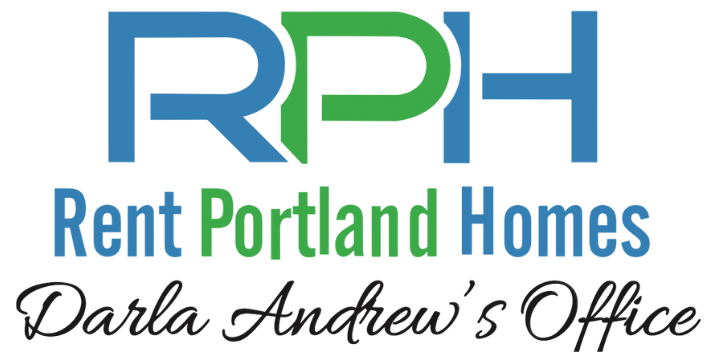The investment property model only works when a tenant is living in the home paying rent. Without a tenant, cash-flow grinds to a halt and investment owners start digging into their own pockets to cover costs. That’s why when one tenant moves out, property owners are motivated to get another tenant in the home as fast as possible. Now in a perfect world, you’ll have a new tenant screened, and ready-to-go the moment your current tenant leaves. If that’s the case, you might be tempted to cut corners on the work you do between tenants to get your cash flow moving again. Even if there’s a delay between when one tenant leaves and the other moves in, you may want to scrimp on the between-tenant tasks to save a little bit of money. This is a big mistake.
The period between tenants offers property owners an opportunity to tune their homes up before a new renter moves in. It’s also a valuable time to thoroughly document your home’s condition in preparation for a new occupant. This is the time to conduct regular home maintenance, repair damage from previous tenants, and ensure the long-term health of your investment. With that in mind, here’s a guide you can follow as you transition from one tenant to the next.
Step 1: Conduct a Walkthrough with Your Departing Tenants
If you’re like most property owners, you collected a deposit from your current tenant to cover potential damage and repairs to your rental property during the time they lived there. By conducting a walkthrough before your tenant departs, you’ll have the opportunity to assess the property’s cleanliness and discuss any damage you see. The deposit return is often a source of conflict between a tenant and an owner. By conducting a walkthrough, you have the opportunity to discuss and mitigate any potential disagreements in person, before they become a more significant problem.
Aside from damage, the walkthrough is also an opportunity to ask your departing tenants about issues they may not have reported. After all, they’ve been spending more time in the home than you have and should have a good sense of the home’s overall condition. You can use this feedback to begin making your repair list.
Step 2: Make Any Needed Repairs
Now that your previous tenant is gone, you’ll have unlimited access and plenty of space to conduct needed repairs. This is your chance to repair damage from previous tenants, like holes in the wall, carpet stains, or other wear-and-tear issues. You should also fix any problems that went unreported by your last tenants. Many times, renters won’t report small issues like leaky faucets or running toilets because they don’t think they’re a big deal. However, you’ll want to make sure everything is in tip-top shape before your new tenant takes over the property. Many investment owners also use this time to put a fresh coat of paint on exterior walls or replace carpeting.
You should also consider making exterior repairs as well if needed. Issues like broken windows, cracked pavement, or peeling exterior paint can negatively affect your home’s curb appeal and potential rental return. To get the most from your investment, take the time to keep your property looking its best.
Step 3: Address Health and Safety Issues
As you’re making repairs, you should also address any health and safety issues. This is the time to replace the batteries in your property’s smoke and carbon monoxide detectors. You should also look for signs of mold and address it right away if you find any. If you own an older property, you should consider lead and asbestos remediation because they can lead to serious health risks. And, before turning your property over to the next tenant, you should change the locks. Even if the previous tenant turned over their keys, installing new locks is an inexpensive way to reduce your liability.
Step 4: Look for Issues with the Heating, Plumbing, and Electrical Systems
Emergency repairs are always an investment property owner’s biggest headache. When there is an emergency repair, it often has to do with the heating, plumbing, or electrical systems. However, if you can spot signs of trouble before your new tenants arrive, you can make repairs and avoid those troublesome emergency calls altogether. In many cases, professionals can discover these problems during routine maintenance. So, consider scheduling heating, plumbing, and electrical maintenance in-between tenants.
Step 5: Clean the Property
Once you’ve made your repairs, it’s time to prepare your investment property for its new tenants. This step begins with a good cleaning. Even though your departing tenant may have already cleaned the property, it likely won’t be enough. As you clean, pay special attention to the tubs, toilets, and kitchens. If your property is in excellent condition when you turn it over to the new tenants, it will show you care about its condition. That, in turn, will communicate your expectations that they treat the property well during their time there.
Step 6: Document the Property’s New Condition Before the New Tenants Arrive
Now that you’ve refreshed your home with needed repairs and deep cleaning, it’s time for your new tenants to move in. Before they do, however, you need to document your home’s condition. This step will form the basis for the walkthrough you conduct when these new tenants leave, and you begin this process all over again. We recommend taking as many photographs as possible throughout the house. That way, there’s visual evidence and very little room for dispute should you discover any damage upon move-out. Provide copies of these photos along with your description of the property as part of your tenant’s signed lease agreement.
Transform Your Property into a Turn-Key Investment
While this is, admittedly, a lot of work, it’s a necessary step in maintaining your investment property’s value over the long-term. By ignoring regular maintenance, repairs, and cleanings, you only kick the can down the road. Eventually, you won’t be able to ignore these issues any longer. At that point, your home will require extensive and expensive repairs to retain its rental value, or you’ll be forced to live with a compromised asset that no longer commands top dollar.
Of course, you could avoid these tasks altogether by hiring a property management company. When Rent Portland Homes by Darla Andrew manages a property, we handle these time-consuming, but essential between tenant tasks. If your property does need maintenance or repair, our team can handle those issues for you. By partnering with Rent Portland Homes by Darla Andrew, your investment property becomes an actual turn-key investment.
To learn more, call or text Darla today at (503) 515-3170 or fill out the contact page on our website.


Recent Comments